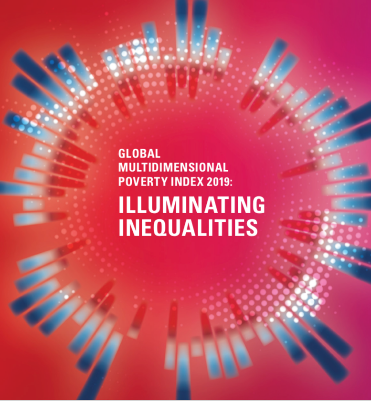A new report by the United Nations Development Programme (UNDP) on Thursday, July 11, 2019, shows that the traditional concept of poverty is outdated and the labeling of countries as either rich or poor is over-simplification.
The report titled the 2019 global Multidimensional Poverty Index (MPI), which was released in collaboration with the Oxford Poverty and Human Development Initiative (OPHI), shows vast inequalities among countries and among the poor themselves. A detailed picture of poverty for 101 countries and 1,119 subnational regions covering 76% of the global population, going beyond simple income-based measures to look at how people experience poverty every day.
According to the report, for example, in Nigeria where “the proportion of people who are multi-dimensionally poor has remained constant at just over 50% over the past decade (up to 2017), the actual the number of people who are multi-dimensionally poor increased from 86m to 98m over the same period.”
Continuing, the report noted, “that when compared to the national poverty line which measures income/consumption, a larger proportion of Nigerians (51%) are multi-dimensionally poor than those that are income poor (46%).”
Globally, according to the UNDP report, 886m or over two-thirds of the world’s 1.3bn people multi-dimensionally poor live in middle-income countries, while another 440m live in low-income countries.
In Nigeria, the report stressed, “even though the national average shows that around 50% of Nigeria are multidimensionally poor, state and local government levels will reveal a completely different scenario – higher or even lower levels.”
A statement by Lucky Musonda, spokesman of the international agency, quoted Pedro Conceição, Director of the Human Development Report Office at UNDP as stressing the need to understand that even those living in poverty experience different levels of deprivation and inequality.
These levels include: “Are they malnourished? Can they go to school? Only then will poverty reduction policies be both efficient and effective.“
Findings of the 2019 global MPI also paint a detailed picture of the many differences in how – and how deeply – people experience poverty. Deprivations among the poor vary enormously: in general, higher MPI values go hand in hand with greater variation in the intensity of poverty.
Results also say children suffer poverty more intensely than adults and are more likely to be deprived in all 10 of the MPI indicators, lacking essentials such as clean water, sanitation, adequate nutrition or primary education.
Worldwide, the report says one in three children is multi-dimensionally poor, compared to one in six adults, which means that nearly half of the people living in multidimensional poverty, about 663m, are children, with the youngest children bearing the greatest burden.
It was not all bad news, however, as the data also showed that countries furthest behind, or those ranked among the bottom 40% are moving up the fastest than the rest, Sabina Alkire, OPHI Director.
This, he believes, is “a pro-poor pattern that reduces inequalities in several Sustainable Development Goals.”
Specifically, he said, 270m people moved out of multidimensional poverty, largely driven by South Asia, particularly India where 271m people moved above the poverty line between 2006 and 2016, while in Bangladesh the number dropped by 19m between 2004 and 2014.
The reverse was the case in Africa, where there was less, or no absolute reduction in the numbers of multi-dimensionally poor, as it rose by 28m across the three countries considered.
This was however blamed on the rapid population growth, which outstripped reductions in poverty.
Trending Today
Menu








